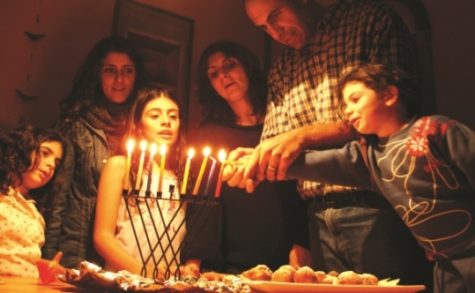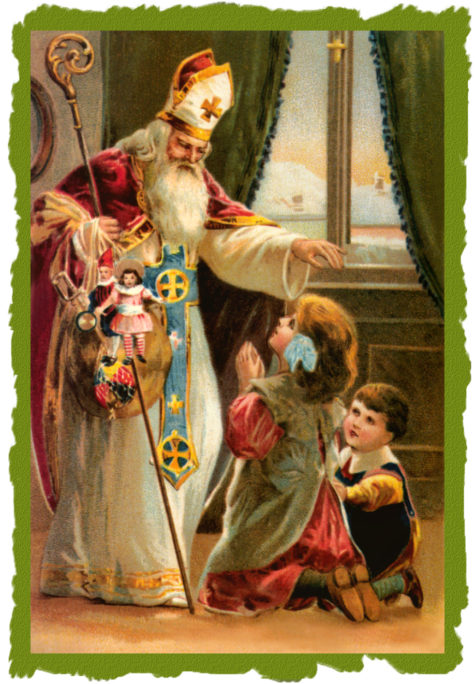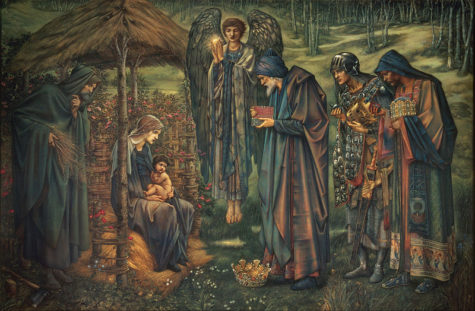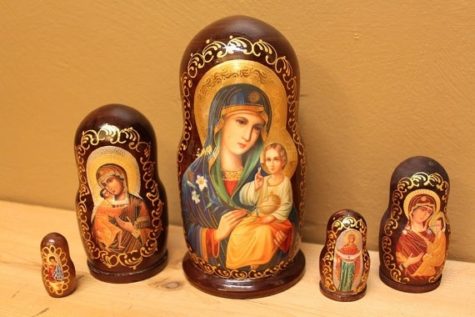Midwinter Festivals
Hanukkah (Hanukah / Hanuka / Chanukah) is a festival of lights that is symbolized by the candelabrum known as a menorah. Hanukkah celebrates a lighting miracle when one night’s worth of oil lit candles for 8 days. Special foods and gift-giving are also a part of Hanukkah.
This eight-day festival of light that begins on the eve of the 25th of the Jewish month of Kislev – celebrates the triumph of light over darkness, of purity over adulteration, of spirituality over materiality.
Here’s the Story:
More than twenty-one centuries ago, the Holy Land was ruled by the Seleucids (Syrian-Greeks), who sought to forcefully Hellenize the people of Israel. Against all odds, a small band of faithful Jews defeated one of the mightiest armies on earth, drove the Greeks from the land, reclaimed the Holy Temple in Jerusalem and rededicated it to the service of God.
When they sought to light the Temple’s menorah (the seven branched candelabrum), they found only a single cruse of olive oil that had escaped contamination by the Greeks; miraculously, the one-day supply burned for eight days, until new oil could be prepared under conditions of ritual purity.
To commemorate and publicize these miracles, the sages instituted the festival of Chanukah. At the heart of the festival is the nightly menorah (candelabrum) lighting: a single flame on the first night, two on the second evening, and so on till the eighth night of Chanukah, when all eight lights are kindled.
On Chanukah, the Hallel and Al HaNissim are added in the daily prayers to offer praise and thanksgiving to God for “delivering the strong into the hands of the weak, the many into the hands of the few… the wicked into the hands of the righteous.”
Chanukah Customs Include:
- Eating foods fried in oil – latkes (potato pancakes) and sufganiot (doughnuts)
- Playing with the dreidel – a spinning top on which are inscribed the Hebrew letters nun, gimmel, hei and shin, an acronym for Nes Gadol Hayah Sham, “a great miracle happened there”
- The giving of Chanukah gelt, (gifts of money), to children
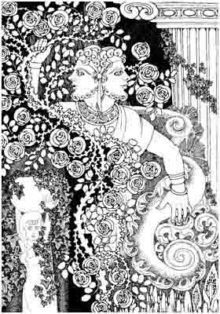 In ancient Rome, January 9th (according to some sources it was Jan 11) was the Agonalia or Festival to Janus, god of gates and doorways. There seem to be many different legends about the history of Janus. One has him the son of Uranus and Hecate. Another says he had a son named Tiberinus whose accidental drowning named Roma’s river. According to another he was a son of Apollo and the first king of Latium. His colony near the Tiber is supposed to have given the name to the Janiculum Hill. Another story says that Janus welcomed Saturn to earth after the latter was driven out of Olympia by Zeus.
In ancient Rome, January 9th (according to some sources it was Jan 11) was the Agonalia or Festival to Janus, god of gates and doorways. There seem to be many different legends about the history of Janus. One has him the son of Uranus and Hecate. Another says he had a son named Tiberinus whose accidental drowning named Roma’s river. According to another he was a son of Apollo and the first king of Latium. His colony near the Tiber is supposed to have given the name to the Janiculum Hill. Another story says that Janus welcomed Saturn to earth after the latter was driven out of Olympia by Zeus.
Not much is known about how this festival was celebrated. During this festival, according to some sources, the Romans gave dates, figs, and honey sealed in white jars to the god Janus. Such gifts, and also money, would be given to family members as well. My source for the information on gifts of dates, figs, and honey from Etsy, and I cannot vouch for it’s validity. I do, however; like the idea of sweet gifts to the God Janus and also family members during this (his) month, and at this beginning time of the year.
From Ovid we have this:
Janus must be propitiated on the Agonal day.
The day may take its name from the girded priest
At whose blow the God’s sacrifice is felled:
Always, before he stains the naked blade with hot blood,
He asks if he should, Agatne? and won’t unless commanded.
Some believe that the day is called Agonal because
The sheep do not come to the altar but are driven (agantur).
Others think the ancients called this festival Agnalia,
‘Of the lambs’, dropping a letter from its usual place.
Or because the victim fears the knife mirrored in the water,
The day might be so called from the creature’s agony?
It may also be that the day has a Greek name
From the games (agones) that were held in former times.
And in ancient speech agonia meant a sheep,
And this last reason in my judgement is the truth.
Though the meaning is uncertain, Rex Sacrorum,
Must appease the Gods with the mate of a woolly ewe.”
Janus was very important in Rome because the weakest point in any building or municipality is its doorway. Anything from human enemies to evil spirits could enter via that route. So strong was this feeling that Romans always carried corpses out of buildings feet first so that the departed spirits would be less likely to find their way back in.
In 260 BC the Romans built an important gateway temple to Janus after a victory against the previously unbeatable Carthaginian fleet. This was left open in times of war and closed when the armies had returned to the city.
This seems puzzling since one would think that during war the gate would be closed for protection and left open for peacetime. But the meaning of this can be seen in that the gateway was not used on a regular basis, but only for generals marching out to war and when returning in a triumphal procession. During the time the gateway was open, Janus was out fighting for Rome while when it was closed it meant that the god would not abandon Rome.
Januarius was not always the first month of the year. Earlier it had begun, perhaps more sensibly, in March (Martius) with the onset of Spring. Januarius and Februarius were added by Numa Pompilius, one of Rome’s kings in the pre-Republic days. He also moved the beginning of the year to Januarius and set the number of days equal to 29 because Romans considered odd numbers lucky. Notice that all of the festivals are held on odd-numbered days. Centuries later Julius Caesar set the length to 31, as well as adding days elsewhere to fix the problem of the months no longer corresponding to the seasons, a result of the fact that the Roman year was shorter than the actual solar year.
If the first month is seen as the gateway to a new year, naming it after Janus (the -ary means “pertaining to”) actually makes sense. His most common depiction is of a head with two faces, one looking back, the other forward.
This was a festival originally for the protection of the king. A ram was the usual sacrifice victim. Probably originally held on the Quirinal Hill.
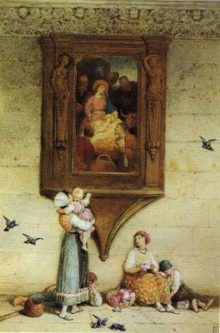 December 28 is Dyzymas Day, also known as Holy Innocent’s Day, or Childremass. This day has always, in one way or another been associated with children. In more recent times the connection is specifically with the children slaughtered at the orders of Herod, who feared the prophecy of the Magi that a new King of the Jews had been born in Judea.
December 28 is Dyzymas Day, also known as Holy Innocent’s Day, or Childremass. This day has always, in one way or another been associated with children. In more recent times the connection is specifically with the children slaughtered at the orders of Herod, who feared the prophecy of the Magi that a new King of the Jews had been born in Judea.
Throughout the Middle Ages this day was considered particularly unlucky and it was believed that no task begun on December 28th would prosper. Both the French King Louis XI and the English King Edward IV refused to do any business on this date, and the latter postponed his coronation when it was originally planned for this inauspicious date.
In Northamptonshire it was known as Dyzymas Day and a local saying was:
“What is begun on Dyzymas Day will never be finished.”
A more barbaric practice that continued well into the eighteenth century was to beat children on this day. This seems to have been a curious mixture of ideas – that if the children were made to suffer on this day they would be spared the rest of the year, and, moreover, that such beatings would drive out any evil spirits who might have taken up residence in the child.
These beatings rarely involved real cruelty. Indeed, the underlying theme of the day was a kind of equality. Thus wives and husbands exchanged token blows, and in parts of Germany and Sweden children were permitted to beat their parents.
Freshly gathered evergreen branches were used for this task, with birch and rosemary being particularly popular. A chant preserved from this time goes:
Fresh green! Long life!
Give me a coin!
While in other places servants beat their masters crying:
Fresh, green, fair, and fine,
Gingerbread and brandy-wine!
The whole idea seems to have been to show that by expressing individuality and exchanging gentle blows, true anger and aggression might thus be waived for the coming year – an enlightened notion from which we might well learn today.
From The Winter Solstice
Many countries in Europe celebrate the Feast of Sinterklaas, or St. Nicholas, on the eve of December 6. After dinner, families hunt for their presents, following clues in funny, anonymous poems. They also eat candies and cookies, especially spicy crispy ginger-cookie figures formed in a traditional wooden mold.
The legend of St. Nicholas is, like the lives of many saints, shrouded in mystery. We know that he was the bishop of Myra in Lycia, part of Asia Minor, during the fourth century. He is credited with saving three sisters from lives of ill repute by throwing bags of gold into their house (some say down the chimney, others say through the window) to provide for their dowries.
In many places in the United States and abroad, children still hang their stockings by the chimney or place their shoes by the window for St. Nicholas to fill them with presents and sweets on the eve of his feast day. He is considered the patron saint of children.
Source: Almanac.com
Advent is a season observed in many Western Christian churches as a time of expectant waiting and preparation for the celebration of the Nativity of Jesus at Christmas. The term is a version of the Latin word meaning “coming”.
It is unknown when the period of preparation for Christmas that is now called Advent first began – it was certainly in existence from about 480 – and the novelty introduced by the Council of Tours of 567 was to order monks to fast every day in the month of December until Christmas. Some have even said it goes back to the time of the Twelve Apostles or that it was founded by Saint Peter himself. This has led to the conclusion that it is “impossible to claim with confidence a credible explanation of the origin of Advent”.
For Christians, the season of Advent anticipates the coming of Christ from three different perspectives. “Since the time of Bernard of Clairvaux (d.1153) Christians have spoken of the three comings of Christ: in the flesh in Bethlehem, in our hearts daily, and in glory at the end of time.” The season offers the opportunity to share in the ancient longing for the coming of the Messiah, and to be alert for his Second Coming.
Advent is the beginning of the Western liturgical year and commences on the fourth Sunday before Christmas, the Sunday nearest to St. Andrew’s Day (30 November), in the Roman Rite of the Catholic Church, and in the Anglican, Lutheran, Moravian, Presbyterian and Methodist calendars. In the Ambrosian Rite and the Mozarabic Rite of the Catholic Church, Advent begins on the sixth Sunday before Christmas, the Sunday after St. Martin’s Day (Nov 11).
Practices associated with Advent include keeping an Advent calendar, lighting an Advent wreath, praying an Advent daily devotional, as well as other ways of preparing for Christmas, such as setting up Christmas decorations, a custom that is sometimes done liturgically, through a hanging of the greens ceremony.
The equivalent of Advent in Eastern Christianity is called the Nativity Fast, but it differs in length and observances, and does not begin the liturgical church year as it does in the West. The Eastern Nativity Fast does not use the equivalent parousia in its preparatory services.
Folk traditions:
In England, especially in the northern counties, there was a custom (now extinct) for poor women to carry around the “Advent Images”, two dolls dressed to represent Jesus and the Blessed Virgin Mary. A halfpenny coin was expected from every one to whom these were exhibited and bad luck was thought to menace the household not visited by the doll-bearers before Christmas Eve at the latest.
In Normandy, farmers employed children under twelve to run through the fields and orchards armed with torches, setting fire to bundles of straw, and thus it was believed driving out such vermin as were likely to damage the crops.
In Italy, among other Advent celebrations is the entry into Rome in the last days of Advent of the Calabrian pifferari, or bagpipe players, who play before the shrines of Mary, the mother of Jesus: in Italian tradition, the shepherds played these pipes when they came to the manger at Bethlehem to pay homage to the infant Jesus.
In recent times the most common observance of Advent outside church circles has been the keeping of an advent calendar or advent candle, with one door being opened in the calendar, or one section of the candle being burned, on each day in December leading up to Christmas Eve. In many countries, the first day of Advent often heralds the start of the Christmas season, with many people opting to erect their Christmas trees and Christmas decorations on or immediately before Advent Sunday.
Colors of Advent:
The usual liturgical color in Western Christianity for Advent is either violet (or purple) or blue. The violet or purple color is often used for hangings around the church, the vestments of the clergy, and often also the tabernacle. In some Christian denominations, blue, a color representing hope, is an alternative liturgical color for Advent, a custom traced to the usage of the Church of Sweden (Lutheran) and the medieval Sarum Rite in England.
The Lutheran Book of Worship lists blue as the preferred color for Advent while the Methodist Book of Worship and the Presbyterian Book of Common Worship identify purple or blue as appropriate for Advent. There has been an increasing trend in Protestant churches to supplant purple with blue.
Proponents of this new liturgical trend argue that purple is traditionally associated with solemnity and somberness, which is fitting to the repentant character of Lent. The Roman Catholic Church retains the traditional violet.
On the 3rd Sunday of Advent, Gaudete Sunday, rose may be used instead, referencing the rose used on Laetare Sunday, the 4th Sunday of Lent. During the Nativity Fast, red is used by Eastern Christianity, although gold is an alternative color.
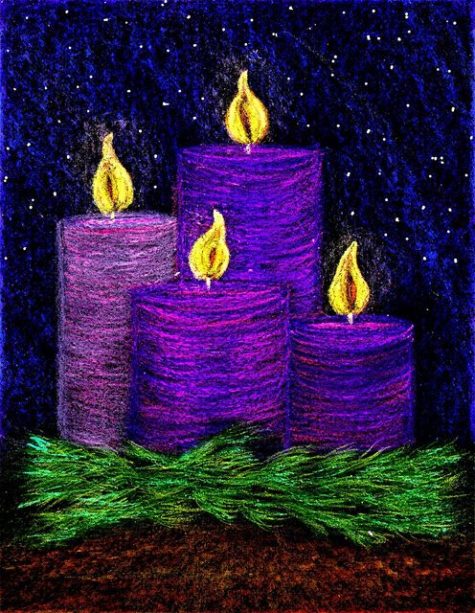 Four Sundays and Four Candles:
Four Sundays and Four Candles:
The keeping of an advent wreath is also a common practice in homes or churches. The readings for the first Sunday in Advent relate to the old testament patriarchs who were Christ’s ancestors, so some call the first advent candle that of hope.
The readings for the second Sunday concern Christ’s birth in a manger and other prophecies, so the candle may be called of Bethlehem, the way or of the prophets.
The third Sunday, Gaudete Sunday after the first word of the introit (Philippians 4:4), is celebrated with rose-colored vestments similar to Laetare Sunday at the middle point of Lent. The readings relate to St. John the Baptist, and the rose candle may be called of joy or of the shepherds.
In the Episcopal Church USA, the collect stir up may be read during this week, although before the 1979 revision of the Book of Common Prayer it was sometimes read in the first Sunday of Advent. Even earlier, ‘Stir-up Sunday’ was once jocularly associated with the stirring of the Christmas mincement, begun before Advent. The phrase ‘Stir up’ occurs at the start of the collect for the last Sunday before Advent in the 1662 Book of Common Prayer.
The readings for the fourth Sunday relate to the annunciation of Christ’s birth, so the candle may be known as the Angel’s candle. The Magnificat or Song of Mary may be featured.
Where an advent wreath includes a fifth candle, it is known as the Christ candle and lit during the Christmas Eve service.
Source: Wikipedia
